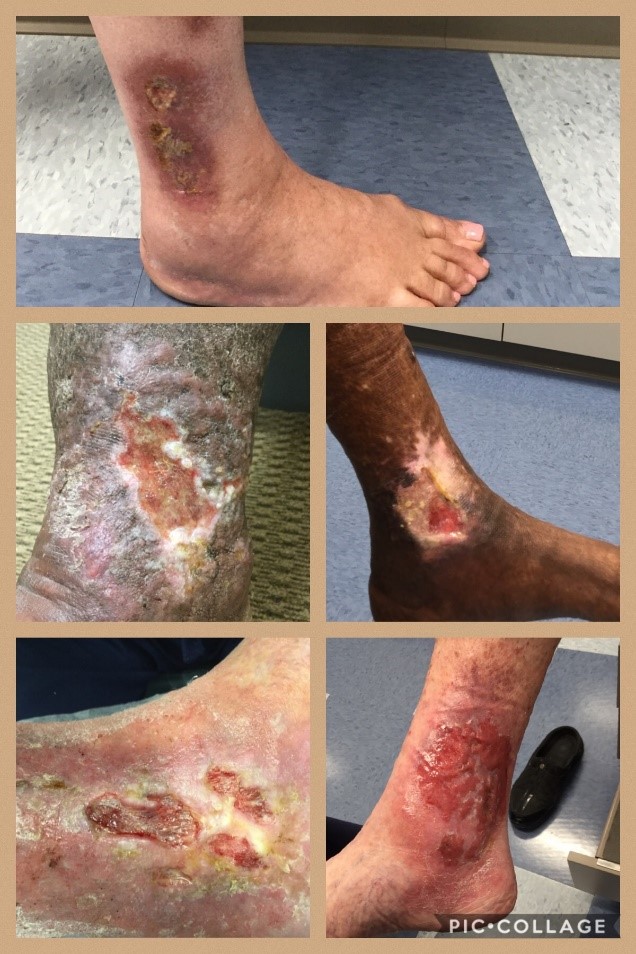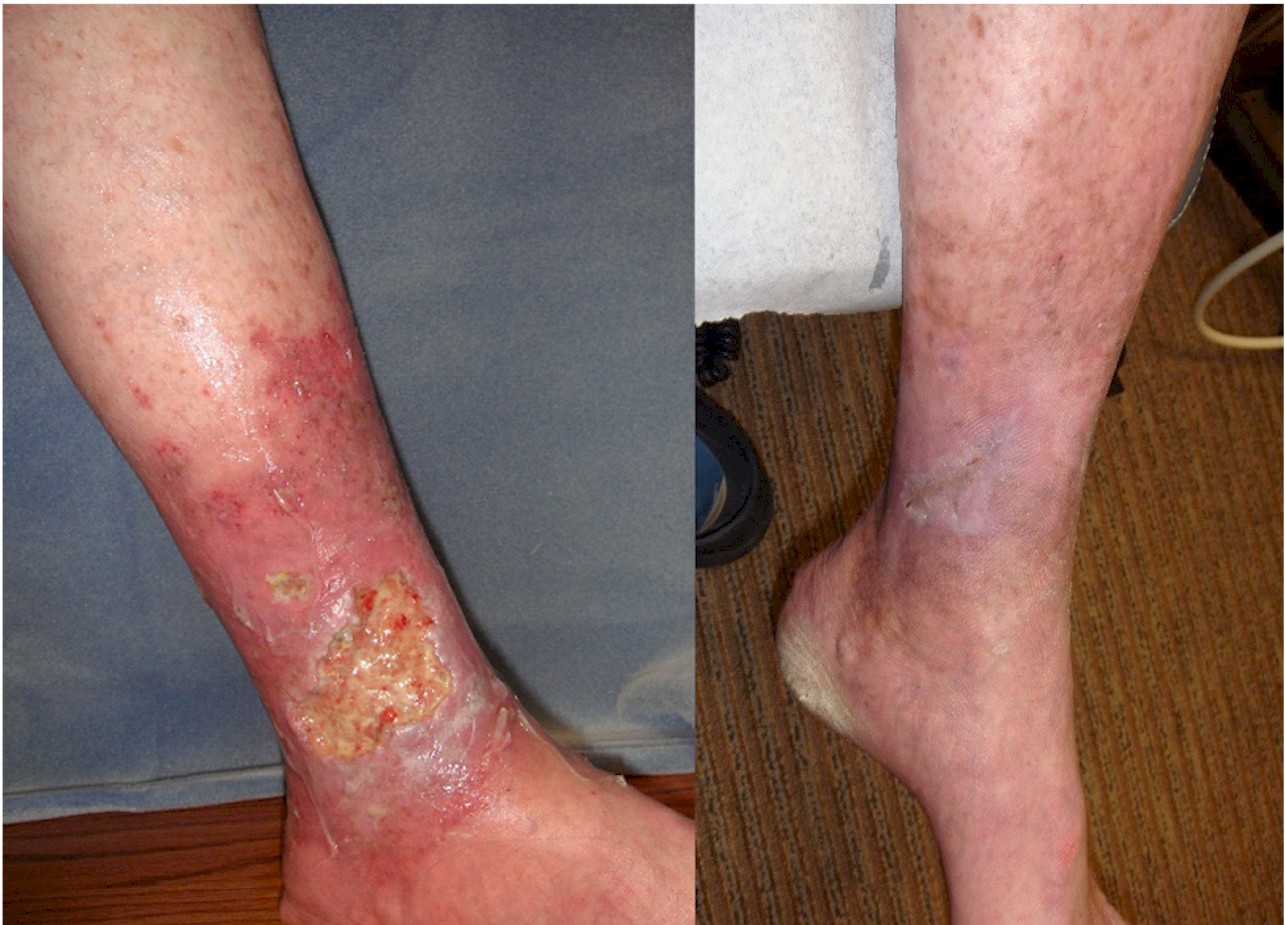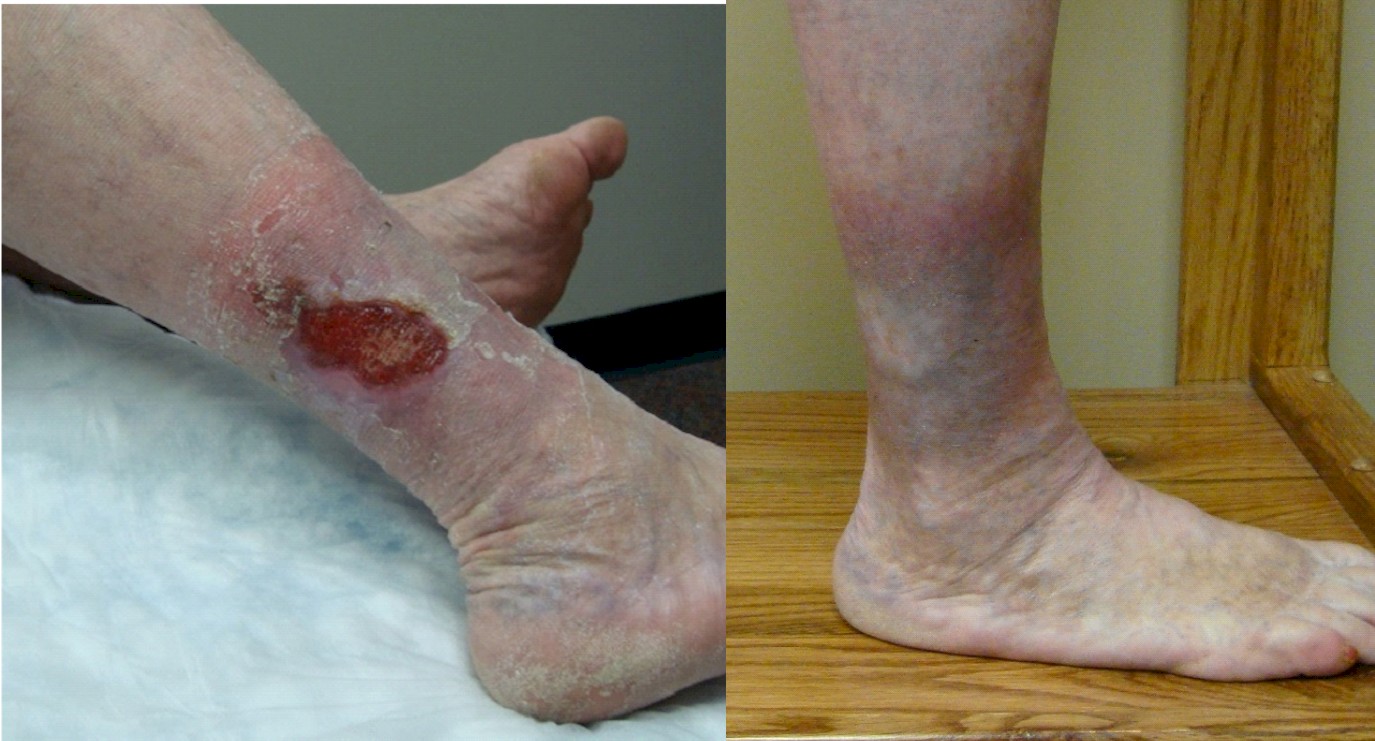Venus Leg Ulceration
Vein Specialists of the Carolinas
If Your Ulcer Is Venous, Ask To Be Referred To
Vein Specialists Of The Carolinas.
Venous Leg Ulceration (VLU)
- This is the worst thing that can happen from chronic venous hypertension.
- It is simply a non-healing wound. The wound may start from minor trauma to the lower leg.
- The lower leg is usually swollen and has a brown or reddish discoloration (CVI) before a wound develops.
- Venous ulcers do not progress to the point where amputation is needed like Diabetes and Arterial blockages do.
- Venous leg ulcers usually will not heal unless the underlying venous problem is reversed.
- The underlying venous problem is high pressure in the veins. This can be due to broken valves, called venous reflux, vein damage from a (DVT) blood clot in the leg, or venous blockages as the veins go into the lower abdomen.
- The ulcers are usually wet and usually less painful than ulcers from other causes.
Treating Venous Leg Ulcers (VLU)
- The initial therapy is to counter act the venous pressure by applying external pressure to the leg with a tight wrap or a compression garment.
- The most common and oldest wrap is called an Unna’s boot after its inventing doctor. The inner layer is impregnated with either zinc oxide or calamine lotion for skin protection. There are usually two or three more outer layers. It is usually left on for a week at a time if possible. This non stretchable wrap works when you are walking by holding firm when the muscles contract and try to expand. This puts high pressure on the leg and pushes the blood up to help empty the leg.
- There are lots and lots of topical wound dressings. One is not superior to the other.
- The biggest hurdle is keeping the wound itself clean and moist and keeping the surrounding skin dry and healthy.
- The ulcers frequently need to be debrided. This means having the excess loose material that can look like thick pus removed with surgical instruments like a Curette. Because the wounds are usually not painful this can be done in the office with nothing more than a topical anesthetic gel. The ideal color for a healthy healing wound is a beefy red color. Once the ulcer reaches this state the wound will begin to slowly close usually from the outside.
- Sometimes a skin graft is needed.
- There are some medications that help ulcers heal. The main one is Vasculera, which is a modified element in orange peels. Pentoxyphyline can also be used, but is three times a day and may have GI side effects.
- There is also a new pump that fits on the lower leg. It is worn all day during daily activities. It is battery powered and keeps the pressure on the leg set at a level chosen by the doctor. When it is plugged into the wall it actively pumps the leg muscles and empties the veins. This is known as an Acti-Touch pump. Insurance and Medicare will pay for most of the cost.
- Many patients get referred to a Wound Center. They do have many good techniques to help heal the wound, but may not address the underlying vein problem. If your ulcer is venous, ask to be referred to Vein Specialists of the Carolinas.


Before and After Treatment

Before and After Treatment
At Vein Specialists of the Carolinas we look for the underlying cause of the ulcer. The underlying cause must be corrected permanently for the ulcer to heal and stay healed. If the underlying cause is not corrected, even if the wound heals, it is highly likely the ulcer will recur over and over again year after year.
From The Blog
Conservative Treatment Options for Vein Conditions
At Vein Specialists of the Carolinas, we understand the importance of providing our patients with effective and conservative treatment options for vein conditions. Among the numerous therapies available, Vasculera, Dermaka, and Vein Formula 1000 stand out as highly...
Understanding Varicose Veins: Symptoms and Potential Confusions
Varicose veins are a common vascular condition that affects millions of individuals, often causing discomfort and aesthetic concerns. As a Vein Specialist of the Carolinas, it is crucial to shed light on the symptoms of varicose veins and the potential confusion they...
5 Vein Conditions That Cause Brown Spots On Legs
Brown spots on the legs can be caused by various vein issues, and their severity can vary depending on the underlying condition. Here are some of the common vein issues that can lead to brown spots on the legs and an overview of their severity: 1. Varicose...

